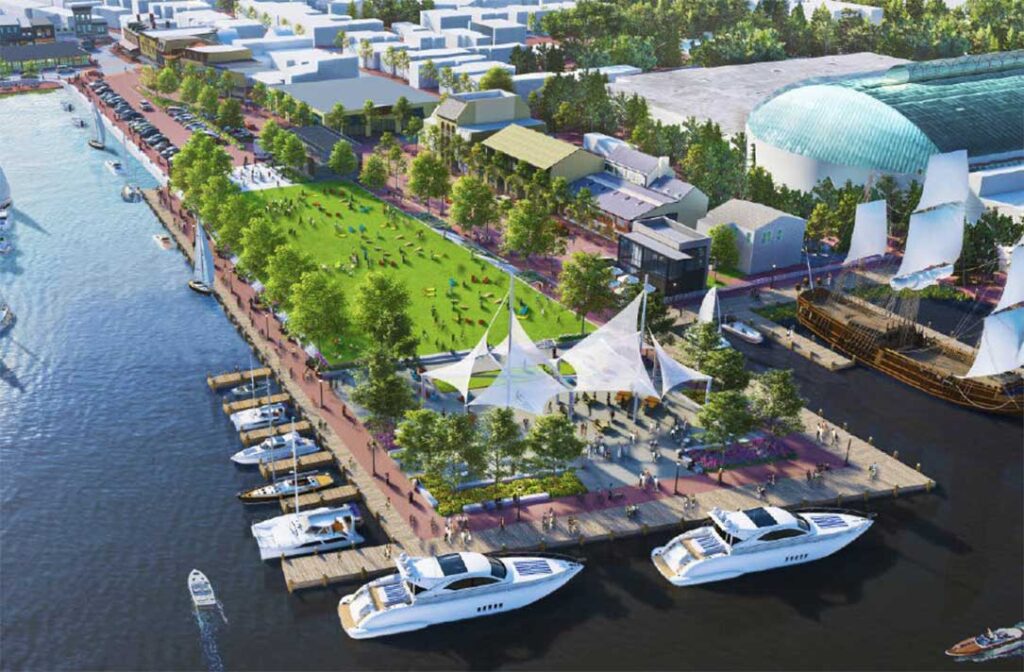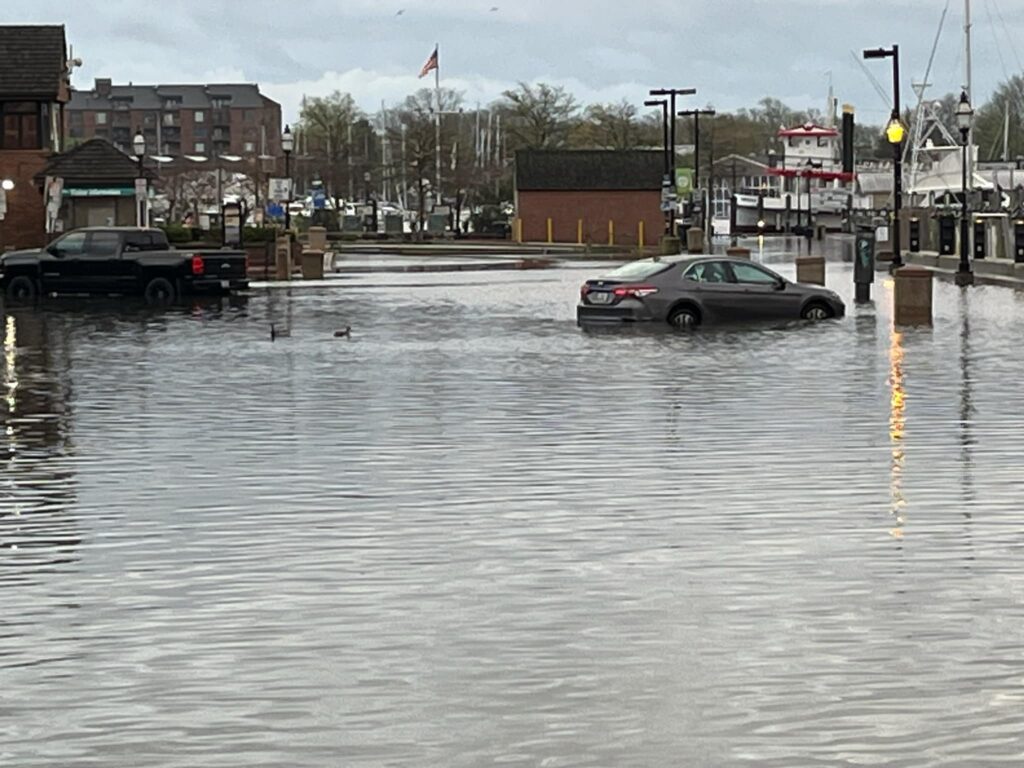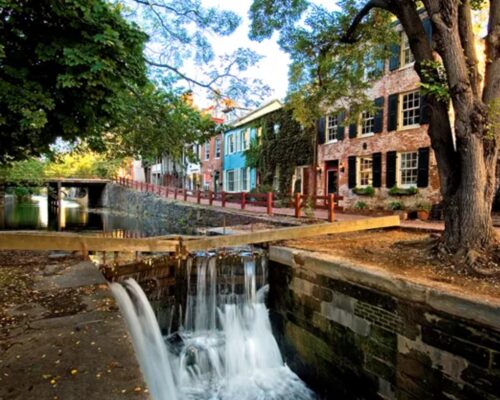Just as Annapolis was about to forge ahead with the anticipated project to redevelop and protect City Dock from increasing flooding incidents, the first phase of work is pushed back by seven months.
The first step in the long-planned $88 million project known as City Dock Reimagined will begin after the fall boat shows.
Mitchelle Stephenson, city spokesperson, says city engineers were told by “internal and external” advisors that their plans for putting electrical work and utilities underground at Susan Campbell Park at the Spa Creek end of the dock wouldn’t pass muster and they had to go back to the drawing board.
“The electrical work was originally slated to start on St. Patrick’s Day,” she said. But the extra time to redraw the plans, get the necessary permits and complete the work would “bump us up against the boat shows,” she explained. “And they have a lease with the city for that space.”
Stephenson said that means “everything will be pushed back,” but that city officials hope to consolidate some of the other projects such as raising the bulkheading at businesses on the Compromise Street side of Ego Alley to prevent flooding to stay as close as possible to the original schedule.

That schedule, laid out on the Annapolis City Dock Project web site, originally called for electrical work at Susan Campbell Park to begin in the spring of 2024. The remaining work, part of which involves turning the parking spaces between Craig Street and Susan Campbell Park into a larger park with a fountain and performance stage, would be spread out over the next year.
Those projects include creating a Maritime Welcome Center that would encompass the Burtis House, the last waterman’s house still standing downtown, realigning storm drains to protect against flooding and installing vertical flood barriers.
The Annapolis City dock has experienced increased flooding in recent years, causing hundreds of thousands of dollars to local businesses. Just last week on April 12, city officials closed Dock and Compromise streets to traffic because of flooding when water levels reached 4.2 feet above normal. That was surpassed in January when flood waters reached 5.1 feet above normal.
“People say City Dock has always flooded, and that’s true,” Stephenson said. “But it was once or twice a year, not 50 times a year. The flooding so far this year, 2024, exceeds what we’ve had in the last five years.”
The increase is evident looking at longer-term data, too. Since 1950, nuisance flooding (or flooding not associated with major storm systems) has increased by 925 percent. In 1969, there were just 3.8 flood days. In 2013, the numberwas 28.5. In 2019, there was 52 days of nuisance flooding, to say nothing of 2024.
The City Dock plan was drafted by the City Dock Action Committee, 100 city residents, and business and marine experts and stakeholders who began work in 2019 to come up with a plan to address the flooding problems at the City Dock and in the downtown historic area.
The work is being financed through a combination of state and federal grants, including $2.2 from the fiscal yar 2024 appropriations legislation President Joe Biden signed last month, Maryland Senators Chris van Hollen and Ben Cardin and Rep. John Sarbanes announced recently.
“The City of Annapolis is treasured for its storied place in American history and its unique character, while also serving as the capital of our state,” Van Hollen, a member of the Senate Appropriations Committee, said in a statement. “We fought for these direct federal investments to improve the resilience of the iconic City Dock and establish a new public park to support Annapolis’s economy and ensure residents and visitors alike can continue to experience and enjoy everything Annapolis has to offer for years to come.”
Cardin, who has announced he will retire at the end of this term next January, called the city dock “a historic commercial hub where businesses still thrive and benefit from the character of the waterfront.”
“Securing federal support for these community-led projects will strengthen the city’s resiliency and economy,” he added. The money will “help sustain a healthy tourism sector and invests in the future of Annapolis.”




